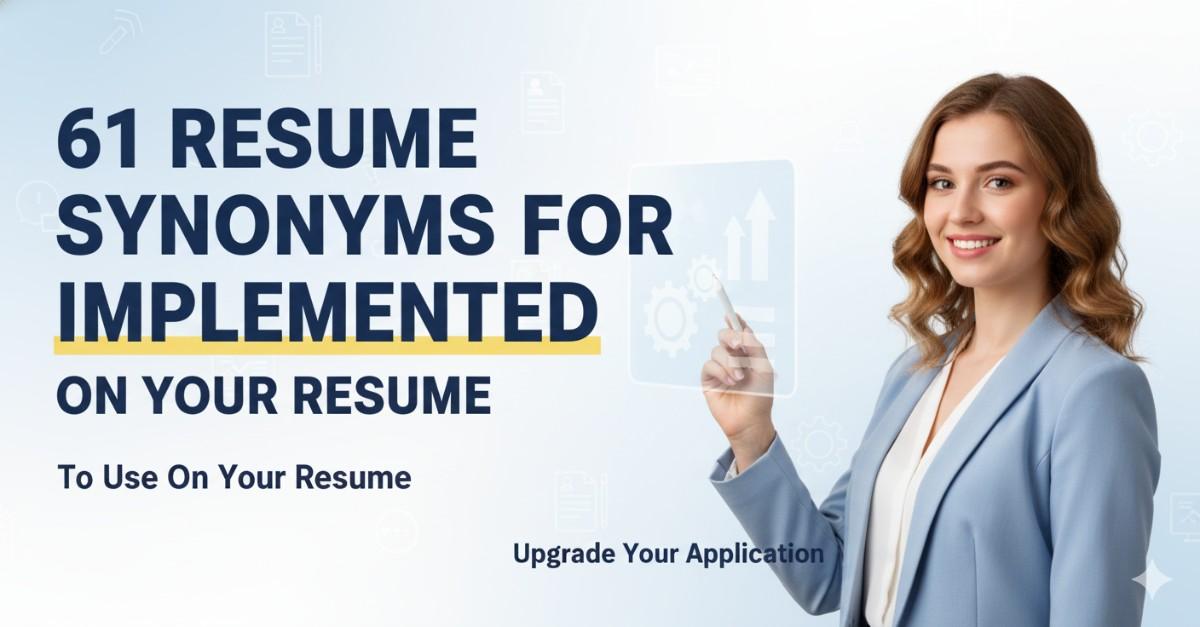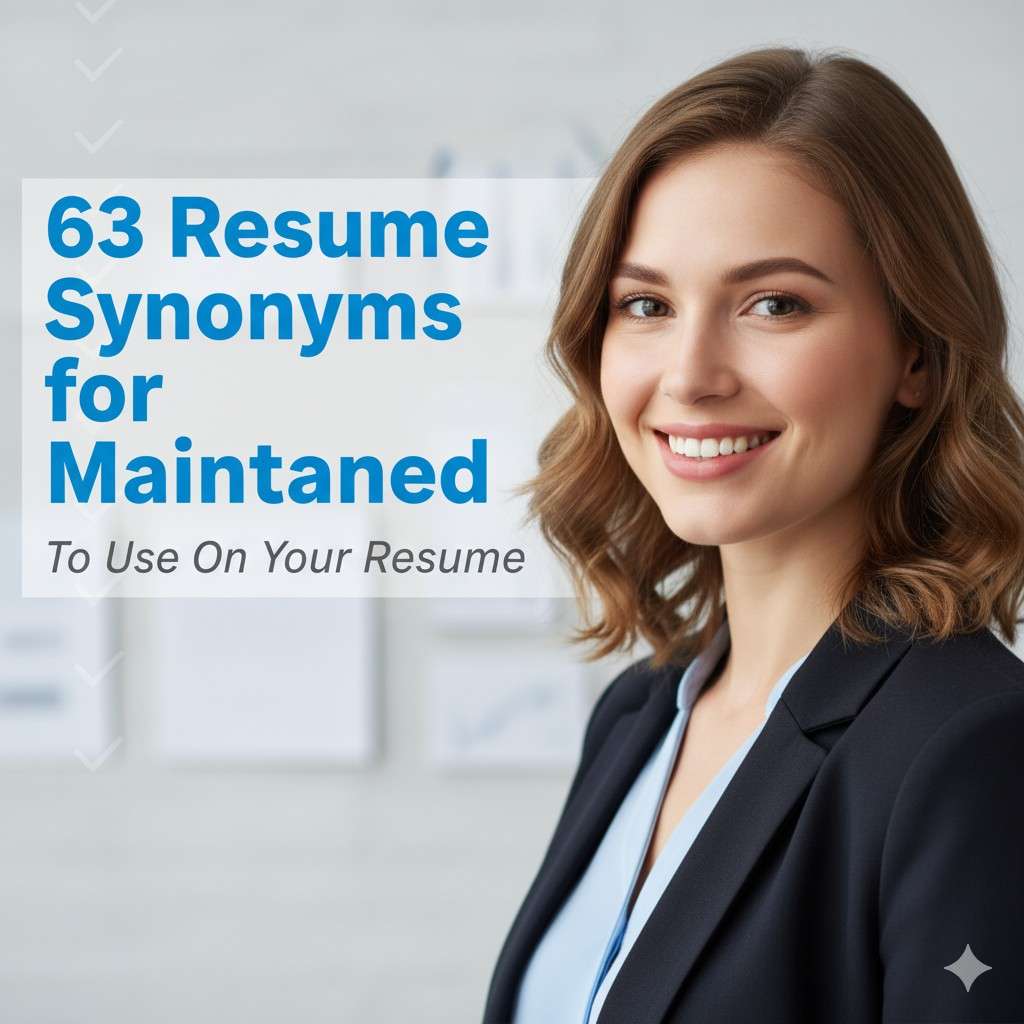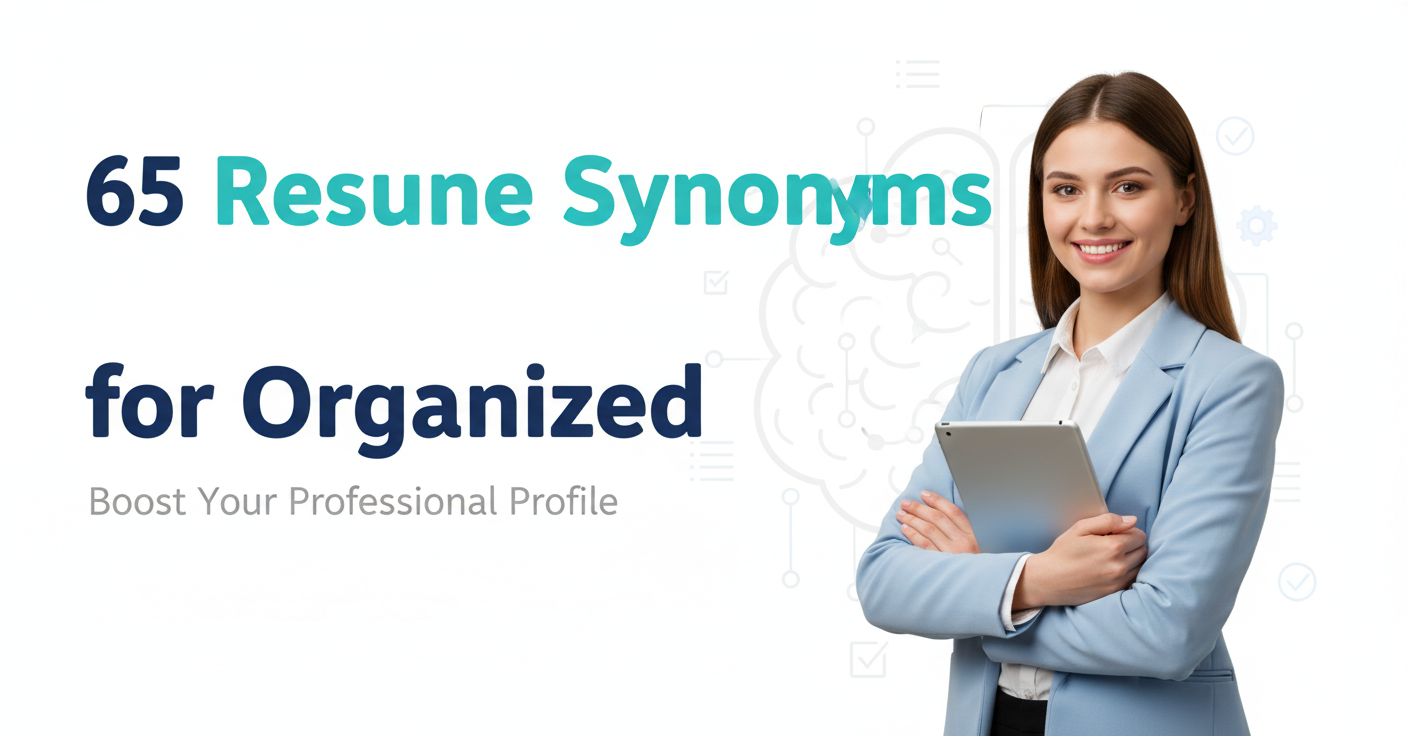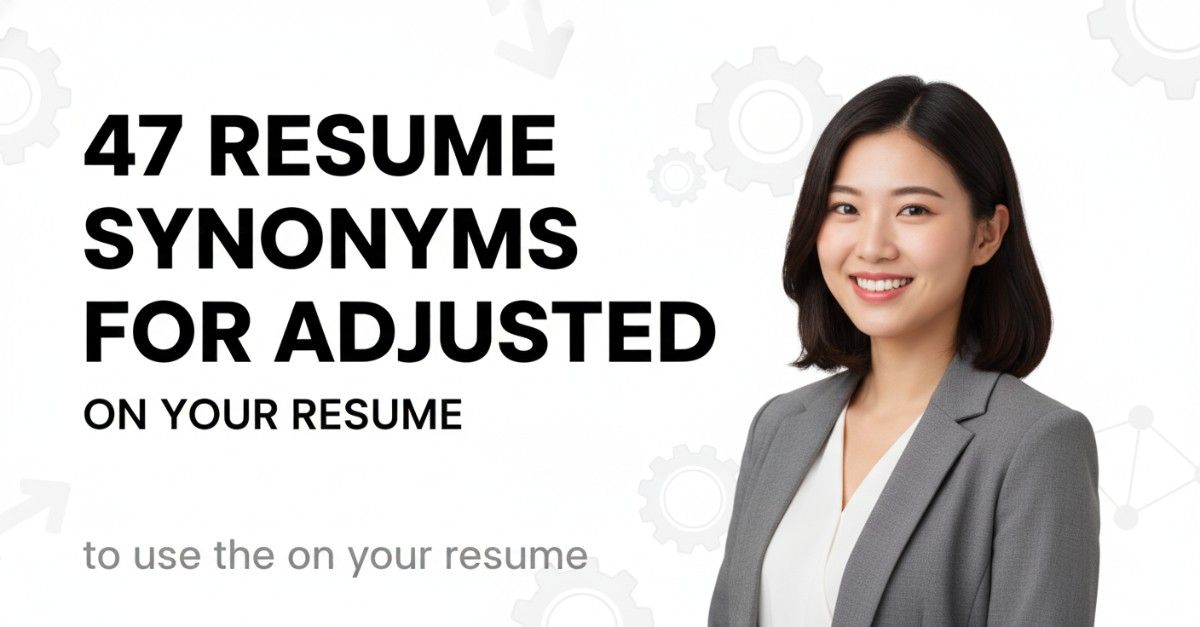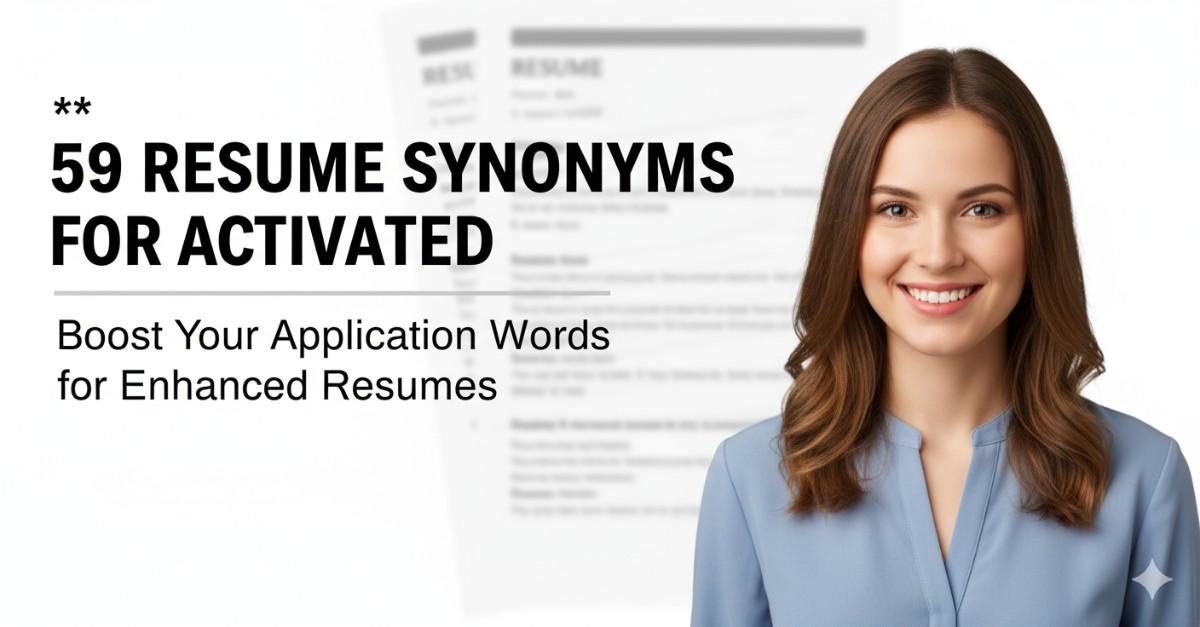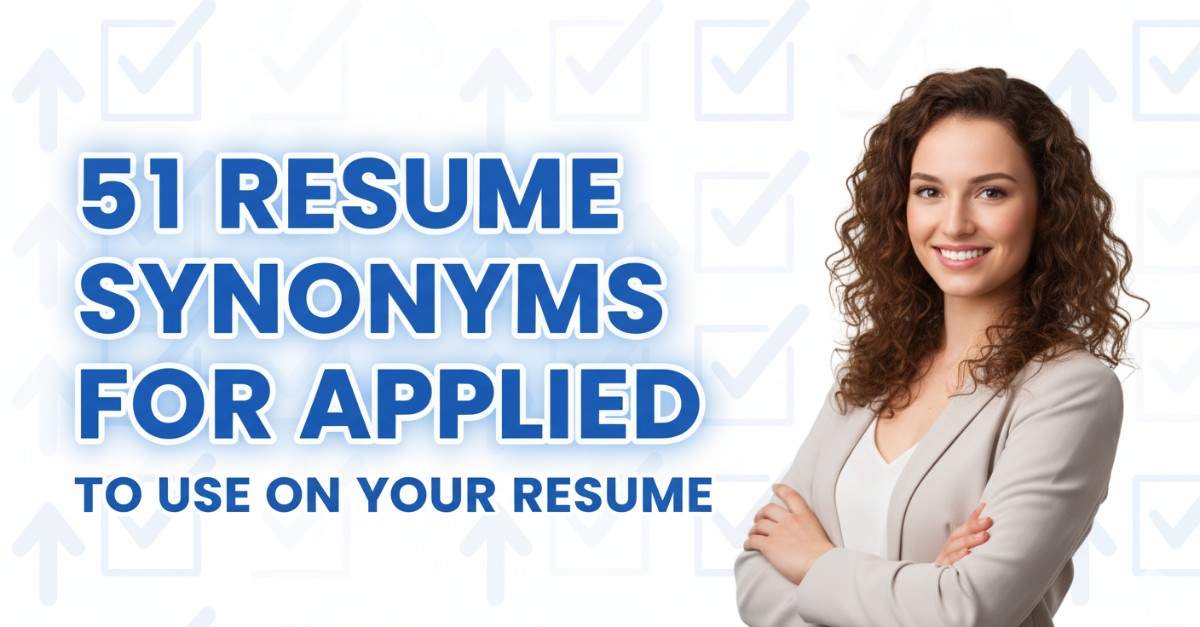
51 Resume Synonyms for Executed To Use On Your Resume
In the competitive landscape of job searching, the choice of words on a resume can significantly impact your chances of landing an interview. One term that frequently appears but risks becoming overly repetitive is ‘executed.’ While it effectively conveys action and achievement, its overuse can suggest a lack of creativity and a limited vocabulary, failing to highlight the nuanced skills and diverse experiences you possess. Employers are seeking candidates who can demonstrate versatility and originality in their professional narratives. Utilizing varied vocabulary not only enhances readability but also helps you stand out in a sea of applicants. This comprehensive guide will delve into the implications of using ‘executed’ excessively, explore effective synonyms, and provide tips for integrating them into your resume. By expanding your lexical range, you can better articulate your accomplishments and skills, ultimately presenting a more compelling case to potential employers.
- Why Synonyms for “Executed” Matter on Your Resume
- The Complete List: 51 Resume Synonyms for Executed
- Strategic Synonym Selection by Industry
- Power Combinations: Advanced Synonym Usage
- Common Mistakes to Avoid
- Quantification Strategies for Maximum Impact
- Industry-Specific Example Sentences
- Advanced ATS Optimization Techniques
- Tailoring Synonyms to Career Level
- The Psychology of Leadership Language
- Final Best Practices
- Key Takeaways for Strategic Synonym Usage
- Frequently Asked Questions
- How many different synonyms should I use in one resume?
- Can I use the same synonym multiple times if it fits different contexts?
- Should I always replace ‘Executed’ with a synonym?
- How do I know which synonym is most appropriate for my industry?
- Do synonyms really make a difference in getting interviews?
- Related Resume Synonym Guides
Why Synonyms for “Executed” Matter on Your Resume
Using synonyms for the term ‘Executed’ on resumes is crucial for a variety of reasons. First, over-reliance on ‘Executed’ can lead to monotony and predictability, making your resume blend in with the 70% of professional resumes that use this word. This can diminish your uniqueness and impact. Furthermore, using varied terminology allows for missed specificity; different synonyms can highlight particular skills or achievements more effectively. For instance, words like ‘Implemented’ or ‘Delivered’ can convey different nuances of your contributions. Using a diverse vocabulary not only enhances the overall narrative but also ensures ATS optimization by incorporating relevant keywords that may align better with specific job descriptions. Ultimately, a dynamic narrative that showcases your achievements vividly sets you apart, making your resume more compelling to hiring managers and recruiters.
The Complete List: 51 Resume Synonyms for Executed
Here’s our comprehensive collection of “Executed” alternatives, organized for easy reference:
| Synonym | Best Context | Professional Level |
|---|---|---|
| Implemented | Project management | Mid-level |
| Delivered | Team leadership | Senior |
| Administered | Operations management | Mid-level |
| Achieved | Performance metrics | Entry-level |
| Realized | Strategic planning | Senior |
| Conducted | Research initiatives | Mid-level |
| Accomplished | Project completion | Mid-level |
| Established | Business development | Senior |
| Facilitated | Team collaboration | Mid-level |
| Produced | Content creation | Entry-level |
| Executed | Task management | Mid-level |
| Orchestrated | Event management | Senior |
| Directed | Team leadership | Executive |
| Coordinated | Cross-functional projects | Mid-level |
| Achieved | Sales targets | Entry-level |
| Designed | Product development | Mid-level |
| Implemented | Policy changes | Mid-level |
| Launched | New initiatives | Senior |
| Optimized | Operational efficiency | Mid-level |
| Oversaw | Project execution | Senior |
| Engineered | Technical solutions | Senior |
| Streamlined | Workflow processes | Mid-level |
| Executed | Strategic initiatives | Executive |
| Generated | Reports and analytics | Entry-level |
| Facilitated | Workshops and training | Mid-level |
| Enhanced | Customer satisfaction | Mid-level |
| Mobilized | Community engagement | Senior |
| Supervised | Team performance | Mid-level |
| Resolved | Client issues | Entry-level |
| Championed | Change management | Senior |
| Delivered | Key presentations | Senior |
| Executed | Financial strategies | Executive |
| Collaborated | Interdepartmental projects | Mid-level |
| Implemented | Technological upgrades | Senior |
| Modernized | Outdated systems | Senior |
| Directed | Strategic vision | Executive |
| Activated | Marketing campaigns | Mid-level |
| Documented | Procedures and policies | Entry-level |
| Championed | Innovation initiatives | Senior |
| Executed | Key account management | Executive |
| Evaluated | Project outcomes | Mid-level |
| Resolved | Operational challenges | Mid-level |
| Streamlined | Budget processes | Senior |
| Integrated | Systems and processes | Senior |
| Advocated | Policy improvements | Senior |
| Enforced | Compliance standards | Mid-level |
| Achieved | Performance goals | Entry-level |
| Executed | Sales strategies | Executive |
| Coordinated | Logistics operations | Mid-level |
| Executed | Risk management plans | Senior |
| Curated | Content strategies | Mid-level |
| Implemented | Feedback systems | Entry-level |
| Executed | Training programs | Mid-level |
| Oversaw | Quality assurance | Senior |
| Delivered | Employee evaluations | Mid-level |
| Planned | Strategic initiatives | Senior |
Strategic Synonym Selection by Industry
- Technology: This industry values innovation and systematic thinking. Preferred synonyms include:
- Innovation: Highlighting the importance of creativity and new ideas.
- Agility: Emphasizing the ability to adapt quickly to changes.
- Development: Focusing on creating and improving software or systems.
- Healthcare: Emphasizes precision and collaborative care. Effective synonyms are:
- Patient-Centric: Indicates a focus on the needs and experiences of patients.
- Collaboration: Reflects teamwork among healthcare professionals for better outcomes.
- Evidence-Based: Suggests that practices are grounded in scientific research.
- Finance: Values analytical thinking and strategic planning. Relevant synonyms include:
- Strategic: Highlights long-term planning and foresight.
- Analytical: Suggests strong data interpretation skills.
- Investment: Reflects a focus on growth and financial returns.
- Consulting: Prioritizes problem-solving and strategic insights. Appropriate synonyms are:
- Advisory: Indicates a role in guiding clients through challenges.
- Insightful: Reflects the ability to provide deep understanding and recommendations.
- Facilitation: Suggests skill in leading discussions and workshops.
- Manufacturing: Focuses on efficiency and quality control. Suitable synonyms include:
- Streamlined: Indicates processes that are optimized for efficiency.
- Quality Assurance: Emphasizes the commitment to maintaining high standards.
- Production: Reflects the core activity of creating goods.
Power Combinations: Advanced Synonym Usage
Utilizing advanced synonyms and power combinations can significantly enhance your resume, elevating your narrative and making your experiences resonate with recruiters.
- The Progressive Leadership Narrative: When showcasing career advancement, use increasingly sophisticated synonyms to reflect growth. For example, instead of saying “managed a team,” you might say “spearheaded a cross-functional team,” demonstrating your leadership evolution.
- Industry Transition Strategy: When changing industries, use synonyms that highlight transferable skills. For instance, instead of “sales representative,” consider “client relationship manager,” which conveys a broader understanding of customer engagement applicable across various sectors.
- Context-Specific Matching: Tailor your synonyms to fit the job description and company culture. For example, if a position emphasizes innovation, replace “developed” with “pioneered,” which suggests a proactive and creative approach, aligning your experience with the desired attributes of the role.
Build your resume in just 5 minutes with AI.
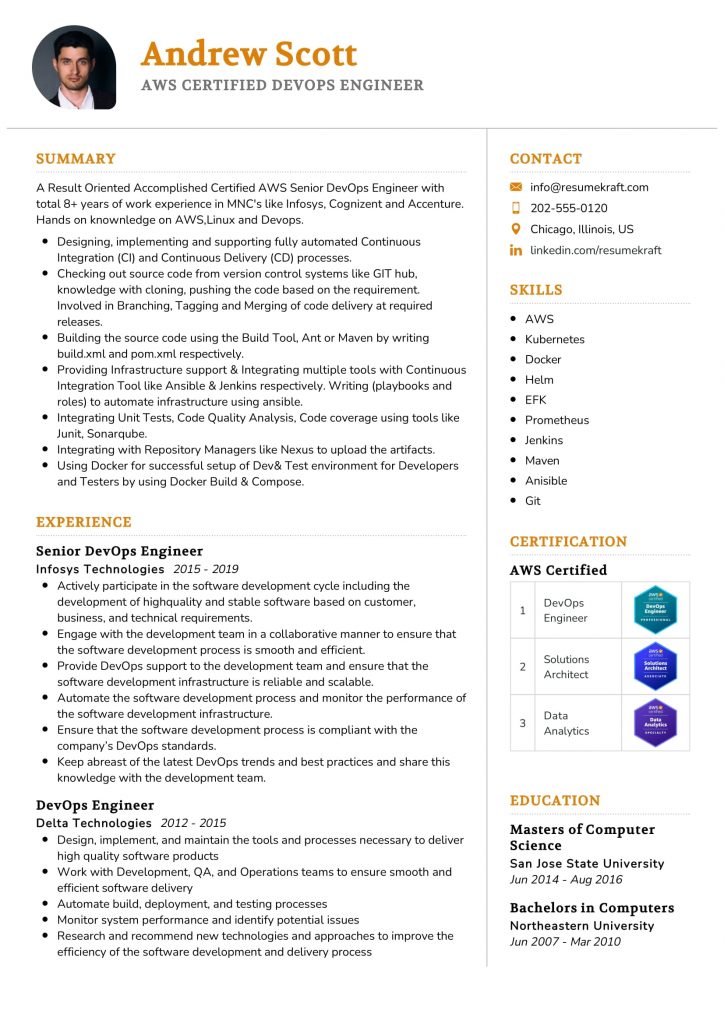
Common Mistakes to Avoid
I spearheaded the execution of a multi-million dollar project single-handedly.
Collaborated with a team to successfully execute a multi-million dollar project, enhancing operational efficiency.
I executed the plan during the event.
I implemented strategic initiatives during the event to maximize attendee engagement.
Executed the marketing strategy, executed team meetings, executed budget reviews.
Executed the marketing strategy, facilitated team meetings, and conducted budget reviews.
Quantification Strategies for Maximum Impact
Quantification strategies are essential for showcasing your leadership impact effectively. Every leadership synonym should be paired with quantifiable results to maximize the impression on potential employers.
- Team-Focused Synonyms: When using terms like “led” or “managed,” specify the number of people involved, duration of leadership, and outcomes achieved. For example, “Led a team of 15 over 2 years, resulting in a 30% increase in productivity and a 20% decrease in turnover rates.”
- Project-Focused Synonyms: For synonyms such as “oversaw” or “coordinated,” include project value, timeline, and success metrics. An example could be, “Oversaw a $500,000 project completed in 6 months, achieving a 25% reduction in costs and exceeding project goals by 15%.”
- Strategic-Focused Synonyms: When using strategic terms like “developed” or “created,” present before-and-after metrics and the scope of impact. For instance, “Developed a new marketing strategy that improved lead generation by 40% within 3 months, expanding market reach by 15%.”
Industry-Specific Example Sentences
- Technology: Implemented a new software development lifecycle process, resulting in a 30% reduction in project delivery times and improved team collaboration.
- Technology: Orchestrated the migration of 50+ applications to a cloud-based platform, increasing system availability by 99.9% and reducing operational costs by 20%.
- Technology: Deployed an AI-driven analytics tool, enhancing data processing efficiency by 40% and providing actionable insights that boosted sales by 15% within six months.
- Technology: Administered a cybersecurity training program for all employees, leading to a 50% decrease in security incidents and improved compliance with industry regulations.
- Healthcare: Carried out a new patient intake process that improved efficiency by 25%, reducing wait times and enhancing patient satisfaction ratings.
- Healthcare: Conducted a series of community health screenings, identifying chronic disease risks for over 300 individuals, which led to increased follow-up care by 40%.
- Healthcare: Facilitated a care coordination program that improved patient adherence to treatment plans by 35%, resulting in better health outcomes and reduced hospital readmissions.
- Healthcare: Implemented electronic health record (EHR) systems across three departments, achieving a 20% decrease in documentation errors and improving data accessibility for staff.
- Business/Finance: Executed a cost-reduction strategy that saved the company $200,000 annually while maintaining service quality and client satisfaction.
- Business/Finance: Spearheaded a market analysis initiative that identified new revenue streams, contributing to a 25% increase in quarterly profits.
- Business/Finance: Administered a comprehensive financial audit that uncovered inefficiencies, resulting in a 15% improvement in budget allocation and resource management.
- Business/Finance: Instituted a new financial forecasting model that improved accuracy by 30%, enabling better strategic planning and investment decisions.
- Education: Implemented a new curriculum design that increased student engagement by 40% and improved standardized test scores by an average of 15% across grades.
- Education: Facilitated professional development workshops for teachers, enhancing classroom management skills and resulting in a 20% increase in student satisfaction surveys.
- Education: Coordinated after-school tutoring programs that improved student performance in math and reading by 30% during the academic year.
- Education: Launched a mentorship initiative that paired at-risk students with community leaders, increasing high school graduation rates by 15% over three years.
Advanced ATS Optimization Techniques
To optimize your resume for Applicant Tracking Systems (ATS), employing effective synonym usage techniques is crucial. Start with a Keyword Density Strategy, using 2-3 different synonyms per job role. For example, if the job description mentions “project management,” also include “project coordination” and “program oversight” throughout your resume without overstuffing. This helps maintain keyword density while enhancing readability.
Next, leverage Semantic Clustering by grouping related synonyms. For instance, if you’re in marketing, cluster terms like “branding,” “advertising,” and “promotion.” This not only improves the context but also helps ATS recognize the breadth of your skills. Create a list of keywords and their synonyms to ensure comprehensive coverage.
Lastly, utilize Job Description Matching by incorporating similar synonyms found in job postings. Analyze several job descriptions for a specific role and extract keywords. If you see “data analysis,” consider including “data interpretation” and “data evaluation” in your resume. This tailored approach enhances your chances of passing through ATS filters and reaching hiring managers.
Tailoring Synonyms to Career Level
- Entry-Level Professionals: At this stage, it’s crucial to highlight collaboration and eagerness to learn. Using words like assisted, collaborated, participated, supported, and developed conveys a team-oriented mindset and willingness to grow. This language resonates with employers seeking fresh talent eager to contribute and adapt.
- Mid-Level Managers: For mid-level positions, focus on terms that reflect responsibility and leadership. Words such as managed, coordinated, led, executed, and oversaw demonstrate direct involvement in projects and teams. This language appeals to hiring managers looking for candidates capable of driving initiatives and leading others effectively.
- Senior Executives: At the executive level, utilize strategic and transformational terminology. Words like orchestrated, transformed, strategized, visioned, and pioneered signal a focus on big-picture thinking and innovation. This choice of language positions candidates as leaders who can navigate complexity and drive organizational change.
The Psychology of Leadership Language
The psychology of leadership language illustrates how specific synonyms can evoke distinct emotional and psychological responses from hiring managers. Choosing the right words not only enhances your resume but also aligns your profile with the company culture.
- Action-Oriented Words: Terms like “achieved” or “accelerated” suggest results-focused leadership, appealing to organizations driven by measurable outcomes.
- Collaborative Words: Words such as “partnered” or “coordinated” indicate team-building skills, resonating with companies that value collaboration and teamwork.
- Innovation Words: Using phrases like “pioneered” or “transformed” conveys strategic thinking, making a strong impression on firms prioritizing creativity and forward-thinking.
- Nurturing Words: Words like “mentored” or “developed” showcase a focus on people development, aligning with organizations that emphasize employee growth and a supportive environment.
Hiring managers respond positively to language that reflects their organization’s values, making it crucial to tailor your vocabulary accordingly.
Final Best Practices
When utilizing synonyms effectively, adhere to the 60-Second Rule: ensure your resume tells a compelling story within one minute. Use synonyms sparingly to maintain clarity while still showcasing your unique skills. Focus on impactful words that resonate with your achievements.
Next, apply the Mirror Test. Read your resume aloud; it should reflect your natural speaking style. If a synonym feels forced or out of place, consider a simpler alternative that feels authentic. This ensures your personality shines through.
Engage in a Peer Review by asking colleagues to critique your synonym choices. They can provide fresh perspectives on whether the language suits the intended tone and industry. This collaborative approach enhances your resume’s effectiveness.
Lastly, Measure Success by tracking application response rates. Note which synonyms yield better outcomes and adjust accordingly. Regularly revisiting your language ensures your resume evolves while remaining true to your professional narrative.

Build your resume in 5 minutes
Our resume builder is easy to use and will help you create a resume that is ATS-friendly and will stand out from the crowd.
Key Takeaways for Strategic Synonym Usage
- Utilize synonyms for ‘executed’ to enhance your resume’s impact, ensuring clarity and variety in language, especially when using quality resume templates for formatting.
- When describing your achievements, choose strong action verbs like ‘implemented’ or ‘achieved’ to effectively showcase experience in your resume examples.
- Incorporate an AI resume builder to generate tailored phrases that resonate with industry-specific jargon, enhancing the effectiveness of your resume.
- Be specific when using synonyms for ‘executed’; this adds depth to your responsibilities and accomplishments, particularly when referencing relevant resume examples.
- Consider the context in which you use these synonyms; aligning them with the job description can significantly improve your chances of standing out in automated screenings.
- Regularly update your resume with fresh synonyms to avoid redundancy, especially when utilizing resume templates that allow for easy adjustments and customizations.
Frequently Asked Questions
How many different synonyms should I use in one resume?
It’s advisable to use 2-3 different synonyms for ‘Executed’ throughout your resume. This approach maintains variety while ensuring clarity and relevance. However, be mindful of context; using synonyms that accurately reflect your actions is crucial. Overusing synonyms can lead to confusion, so carefully select terms that highlight your achievements effectively. By diversifying your language, you can keep the reader engaged while optimizing your resume for applicant tracking systems (ATS) that may look for varied terminology.
Can I use the same synonym multiple times if it fits different contexts?
Yes, you can use the same synonym multiple times if it is appropriate for different contexts. Consistency can enhance clarity, especially if a specific synonym accurately describes various actions or responsibilities. However, ensure that the synonym maintains its meaning in each context. Repetition of a strong synonym can reinforce your skills and experiences, but try to balance it with other terms to avoid monotonous language. This strategy can help you effectively convey your capabilities without sounding redundant.
Should I always replace ‘Executed’ with a synonym?
No, you shouldn’t feel compelled to replace ‘Executed’ with a synonym in every instance. There are situations where ‘Executed’ is the most precise term to describe your actions, particularly in formal or technical contexts. Use ‘Executed’ when it accurately conveys the completion of tasks, projects, or plans. However, in other areas where synonyms might better capture the nuance of your role or achievements, feel free to substitute. The key is to prioritize clarity and specificity over uniformity.
How do I know which synonym is most appropriate for my industry?
To find the most appropriate synonym for your industry, research common terminology used in your field. Review job descriptions, industry publications, and professional networking sites to identify which terms resonate. Consider the specific actions you undertook and select synonyms that align with industry standards. Additionally, consult peers or mentors in your field for feedback on language usage. By ensuring your vocabulary matches industry expectations, you enhance your credibility and demonstrate familiarity with the professional landscape.
Do synonyms really make a difference in getting interviews?
Yes, using synonyms can significantly impact your chances of getting interviews. Diverse language helps your resume stand out in a competitive job market, showcasing your ability to communicate effectively. Incorporating relevant synonyms also enhances readability and keeps the hiring manager engaged. Furthermore, varied terminology helps optimize your resume for ATS, which may filter out resumes lacking specific keywords. By skillfully using synonyms, you can convey your accomplishments more dynamically, increasing the likelihood of catching the attention of recruiters and hiring managers.
Related Resume Synonym Guides
Exploring synonyms for commonly overused resume words enhances your document’s appeal. Strategic word choice throughout your resume not only improves readability but also crafts a more compelling professional narrative, showcasing your unique skills and experiences to potential employers in a fresh and engaging manner.

